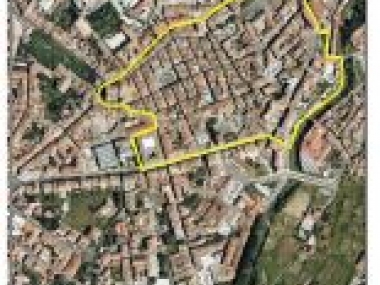Special Report: NODUS - Bridging Urban Renewal and Spatial Planning
Edited on
09 October 2017Urban renewal can no longer be planned on a uniquely local level because it impacts surrounding territories (municipalities, region). Similarly, inherent mechanisms of social exclusion and socio-spatial segregation are often influenced by decisions made on a supra-local level. This observation guided the work done by the URBACT project NODUS, which ended in spring 2010. Its objective was to create links between the various levels of governance and to improve coordination between urban renewal policies and regional spatial planning programmes. Here is a look at two years of discussions and this project's concrete results.

In recent years, the lack of overall vision presiding over the implementation of urban renewal policies has highlighted the limitations of current public interventions. Today, initiatives to fight social exclusion and urban deterioration focus almost exclusively on the most deprived neighbourhoods. The main pitfall is that neighbourhoods of lesser priority receive no aid. Targeted actions without a supra-local strategic framework often only displace the issues to other neighbourhoods (displacement of deprived groups, drugs, prostitution, etc.) and do little or nothing to resolve the deeper causes.
A four-step methodology usable by other cities
The seven partners in the NODUS project (3 regions, 4 cities) used their experiences as a basis to define a methodology that uses multiple-party cooperation to develop integrated urban renewal strategies that are at once horizontal (planned across several neighbourhoods and municipalities), vertical (decided upon by all levels of governance), and transversal (integrating rehabilitation, along with social and economic initiatives). The method, which is presented in detail in the t, has four steps to it.
- Step 1: A model of multiple-party governance to organise renewal and spatial planning policies on a metropolitan or city-region level.
- Step 2: Methods for mapping deprived neighbourhoods on the basis of the chosen concept of deprivation and the respective, reliable and precise data, with the goal of creating bridges between deprived neighbourhoods and dynamic zones.
- Step 3: Possible actions for successful renovation and social inclusion projects, particularly in terms of integrated urban renewal.
- Step 4: Evaluation of the results on a regional level in order to multiply the positive effects and reach a territorial balance.
A major challenge: managing the variety of partner expectations
NODUS partner each used parts of this method to build their Local Action Plans, depending on their specific local characteristics and the level of maturity existing in urban renewal. "The major challenge was to gather the various expectations within a shared project, even if it meant adjusting the initial project," recognizes Iván Tosics, Lead Expert for the NODUS project, who is also a mathematician and sociologist and one of the managers of the Metropolitan Research Institute in Budapest. "Certain partners had very technical expectations, while others aimed for more overall concepts and methods."
"Amsterdam worked on the collateral effects renewal has on other neighbourhoods. The Catalan Region (Spain), the Lead Partner, deepened its already implemented strategy of bringing together the various involved parties around an integrated spatial planning policy. In Alba lulia (Romania) and Dobrich (Bulgaria), where there was not enough statistical data, the major part of the work lay in collecting data on the neighbourhoods."
A project that played its role sharing experiences
"What was interesting," Iván Tosics says, "and what is also the basis of URBACT, is that NODUS built a network of partners that already have good experience in urban renewal along with partners for which the approach is new. Partners in new European Union Member States learned a lot in terms of methods and ways of taking action while for the older Member States, NODUS was an opportunity to draw up an assessment of ongoing actions and benefit from the momentum of new members. As a result, this project led to mutual learning. Another major accomplishment is that the Local Support Groups will probably continue to meet regularly."
The only downside was that the project did not last long enough and some partners were not involved enough during the life time of the project.
Katowice (Poland): an innovative Local Action Plan for the city
<img style="float: left; padding-right: 5px;" data-cke-saved-src="uploads/RTEmagicC_katowice.jpg.jpg" src="uploads/RTEmagicC_katowice.jpg.jpg" width="240" height="160" alt=" />Katowice is facing a two-fold challenge when it comes to urban renewal: managing its post-industrial heritage and making up for a lack of usable socio-economic statistics concerning the most deprived areas. As part of NODUS, Katowice created a method that combines quantitative and qualitative information about its neighbourhoods, put together with a 0 to 2 scale for measuring the degree of urgency for public intervention. The originality of this mapping is that it enabled the identification of both the weaknesses and the potential of each neighbourhood in order, ultimately, to create bridges between neighbourhoods as part of a supra-local strategy. The area that was chosen for the Local Action Plan (Nikiszoweic) is a former mining neighbourhood with homes built at the end of the nineteenth century. Although 80% of the buildings need renewal, the historical characteristics of the buildings will bring value to the city and open interesting prospects for tourism. The Nikiszowiec pilot project is the first integrated programme of this type to involve the municipality, local communities and the region. It will serve as a model for a vast revitalisation programme for Katowice being deployed through 2013.
Read More:
Submitted by admin on




